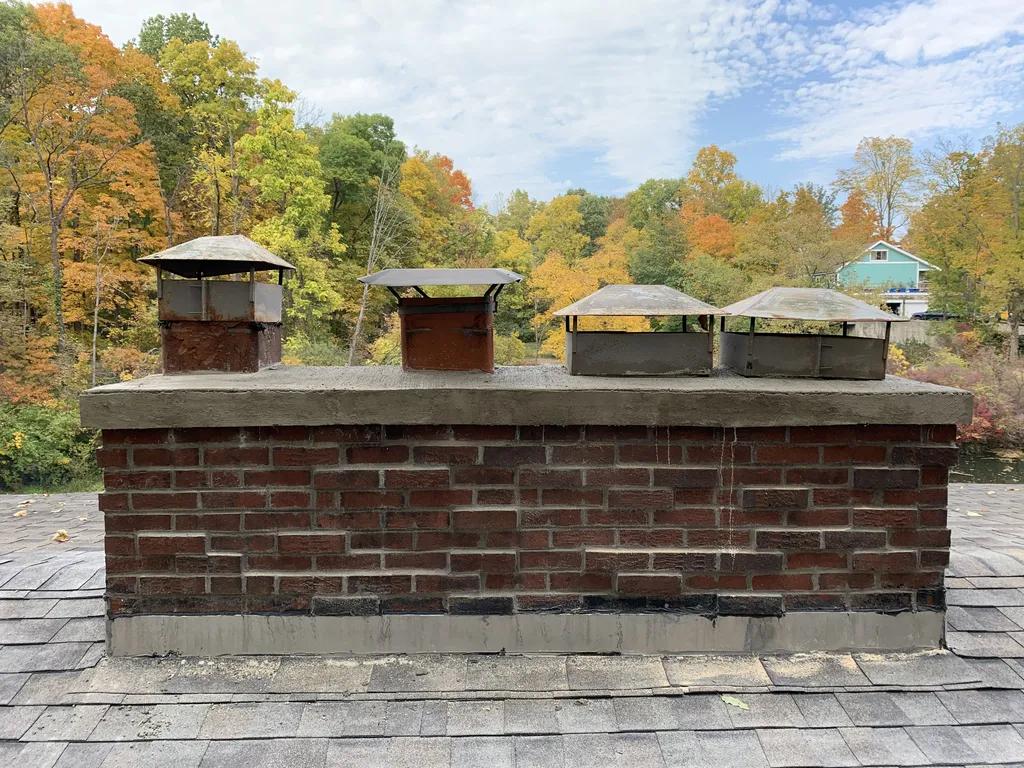Chimney pipes are an essential component of any fireplace or wood-burning stove, providing a safe outlet for smoke and gases to escape from your home. However, a leaking chimney pipe can pose serious risks to both your property and your health. In this article, we will explore common causes of chimney pipe leaks and provide practical troubleshooting tips to help you address this issue effectively.
Table of Contents
- Common Causes of Leaking Chimney Pipes
- Inspection and Diagnosis of Leaks
- Repairing Leaks in Chimney Pipes
- Preventive Maintenance for Chimney Pipe Leaks
- Q&A
- In Summary

Common Causes of Leaking Chimney Pipes
Leaking chimney pipes can be a common issue homeowners face, leading to water damage and potential safety hazards. Understanding the root causes of these leaks is crucial in troubleshooting and finding effective solutions. Here are some of the common reasons why chimney pipes may be leaking:
- Cracked or damaged chimney liner
- Improper installation of the chimney pipe
- Corrosion or rust on the pipe
- Missing or damaged chimney cap
- Flashing that is worn out or improperly installed
Inspecting your chimney regularly for any signs of these issues can help prevent leaks and ensure the safety and efficiency of your fireplace. If you notice any of these problems, it is recommended to seek professional help to address them promptly.

Inspection and Diagnosis of Leaks
When troubleshooting a leaking chimney pipe, it is important to conduct a thorough inspection to identify the source of the issue. Start by examining the exterior of the chimney for any visible cracks or gaps. Inspect the flashing around the base of the chimney to ensure it is properly sealed and intact. Check for any signs of water stains or mold on the walls or ceiling near the chimney, as this could indicate a leak.
Next, perform a visual inspection of the interior of the chimney pipe. Look for any signs of rust, corrosion, or loose connections. Use a flashlight to inspect the flue for any obstructions or buildup of creosote. Additionally, have a professional chimney sweep perform a thorough cleaning and inspection to assess the condition of the chimney liner and ensure proper ventilation.

Repairing Leaks in Chimney Pipes
If you notice water dripping or seeping from your chimney pipe, it is essential to address the issue promptly to prevent further damage to your home. Leaks in chimney pipes can lead to water damage, mold growth, and even structural issues if left unattended. Here are some troubleshooting steps you can take to repair leaks in chimney pipes:
- Inspect the chimney pipe: Check for cracks, holes, or gaps in the pipe that may be causing the leak.
- Check the flashing: Ensure that the flashing around the chimney is properly sealed and intact to prevent water from entering.
- Replace damaged components: If you find any damaged parts in the chimney pipe, such as a cracked or corroded section, replace them with new components.
| Material | Cost |
|---|---|
| Chimney flashing | $50 |
| Chimney cap | $100 |

Preventive Maintenance for Chimney Pipe Leaks
One common issue that homeowners face is chimney pipe leaks, which can cause damage to the interior of the house if not addressed promptly. There are several preventive maintenance steps that can be taken to troubleshoot and prevent leaks in the chimney pipe.
- Check for cracks or gaps in the chimney pipe.
- Ensure that the chimney cap is securely in place.
- Inspect the flashing around the chimney for any signs of wear or damage.
- Clean the chimney regularly to prevent buildup of debris and moisture.
If you notice any signs of a leak, such as water stains on the ceiling or walls near the chimney, it is important to address the issue immediately to avoid further damage. By taking these preventive maintenance steps, homeowners can help ensure that their chimney pipe remains leak-free.
Q&A
Q: What are some common signs that indicate a leaking chimney pipe?
A: Some common signs include water stains on the walls or ceiling near the chimney, musty odors, or even a visible drip coming from the pipe itself.
Q: What are the potential causes of a leaking chimney pipe?
A: Leaks can be caused by cracks in the chimney pipe, improper installation, damaged flashing, or a damaged chimney cap.
Q: How can I troubleshoot a leaking chimney pipe?
A: You can start by inspecting the chimney pipe for visible cracks or damage. Check the flashing and chimney cap for any signs of wear or damage. You may also want to check the sealant around the pipe for any gaps or deterioration.
Q: What steps can I take to repair a leaking chimney pipe?
A: Depending on the cause of the leak, you may need to seal cracks in the pipe, replace damaged flashing or chimney cap, or reapply sealant around the pipe. In some cases, professional chimney repair may be necessary.
Q: How can I prevent future leaks in my chimney pipe?
A: Regular chimney maintenance, including annual inspections and cleanings, can help prevent leaks. Additionally, making sure the chimney cap and flashing are in good condition, and ensuring proper installation of the chimney pipe, can help prevent future leaks.
In Summary
In conclusion, addressing a leaking chimney pipe is essential to ensure the safety and efficiency of your chimney system. By following the troubleshooting steps outlined in this article, you can effectively identify and resolve any leaks in your chimney pipe. Remember to always prioritize safety and consult with a professional if you are unsure or uncomfortable handling the repair yourself. Taking proactive steps to maintain your chimney will not only prevent further damage but also prolong the lifespan of your chimney system. Thank you for reading and good luck with troubleshooting your leaking chimney pipe.


